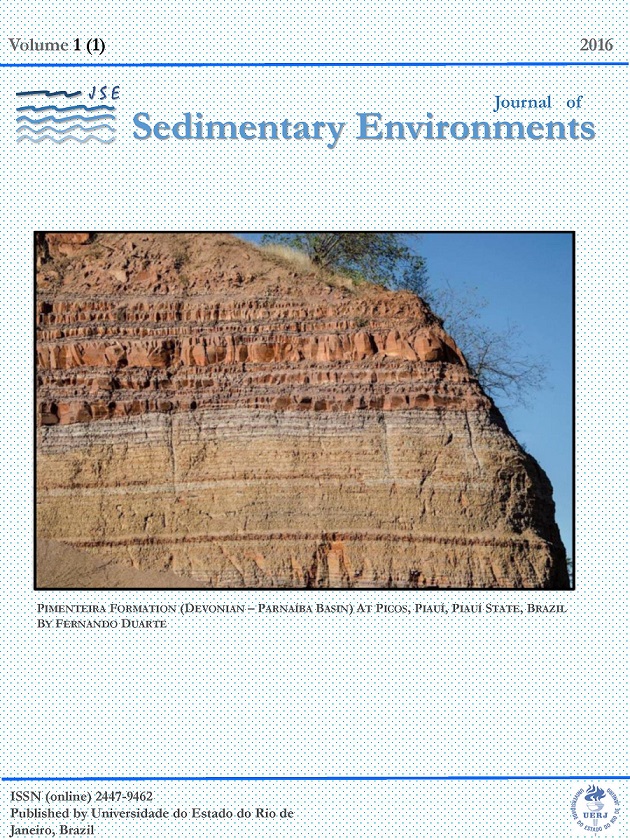IN-PHASE INTER-HEMISPHERIC CHANGES IN TWO UPWELLING REGIONS: THE SOUTHEAST BRAZILIAN AND NW IBERIAN MARGINS
DOI:
https://doi.org/10.12957/jse.2016.21463Keywords:
Holocene, Paleoceanography, Atlantic Ocean, Inter-Hemispheric, Upwelling, Continental ShelfAbstract
Two high-resolution multi-proxy records from cores collected in the upwelling regions off Cabo Frio (Brazil, core 7620) and Galicia (NW Iberian Peninsula, core KSGX40) were used to evaluate environmental changes during the Holocene. Core 7620 is a muddy sequence that exhibits gradual coarsening upward and covers a time period of approximately 9400 yr cal BP. Core KSGX40 records the last 4800 yr cal BP and consists of a sedimentary sequence exhibiting gradual fining upward in grain size. Results from core 7620 indicate that important changes occurred at 7000, 5800 and 3000 yr cal BP. Micropaleontological proxies indicate an increase in organic carbon supply towards the bottom, due to higher oceanic productivity, in the last 2500 yr cal BP. This increment in oceanic productivity is likely related to stronger upwelling events in the Cabo Frio region in that period. Core KSGX40 also indicates an increment in upwelling events in the Galicia region in the last 2500 yr cal BP. In both systems, the upwelling is linked to the intensification of NE winds and the prevalence of relatively drier climatic conditions. The Holocene upwelling changes in the Cabo Frio region were previously attributed to deviations in the position of the Inter-Tropical Convergence Zone (ITCZ), whereas in the Galician area this phenomenon was attributed to alterations in the North Atlantic Oscillation (NAO). The multi-millennial variability recorded in both cores suggests the occurrence of Holocene in-phase climatic changes both in Southern Hemisphere at the latitudes of the SW coast of Brazil (Cabo Frio region) and in the Northern Hemisphere, at the latitude of Galicia (NW Iberian Margin). These coupled climatic alterations were probably related to changes in the oceanic-atmospheric climatic systems, coupled with and amplified by solar forcing effects.
doi: 10.12957/jse.2016.21463
Downloads
Published
Issue
Section
License

Journal of Sedimentary Environments (JSE) is licensed under a Creative Commons Attribution-Noncommercial-Share Alike 4.0 International License.

